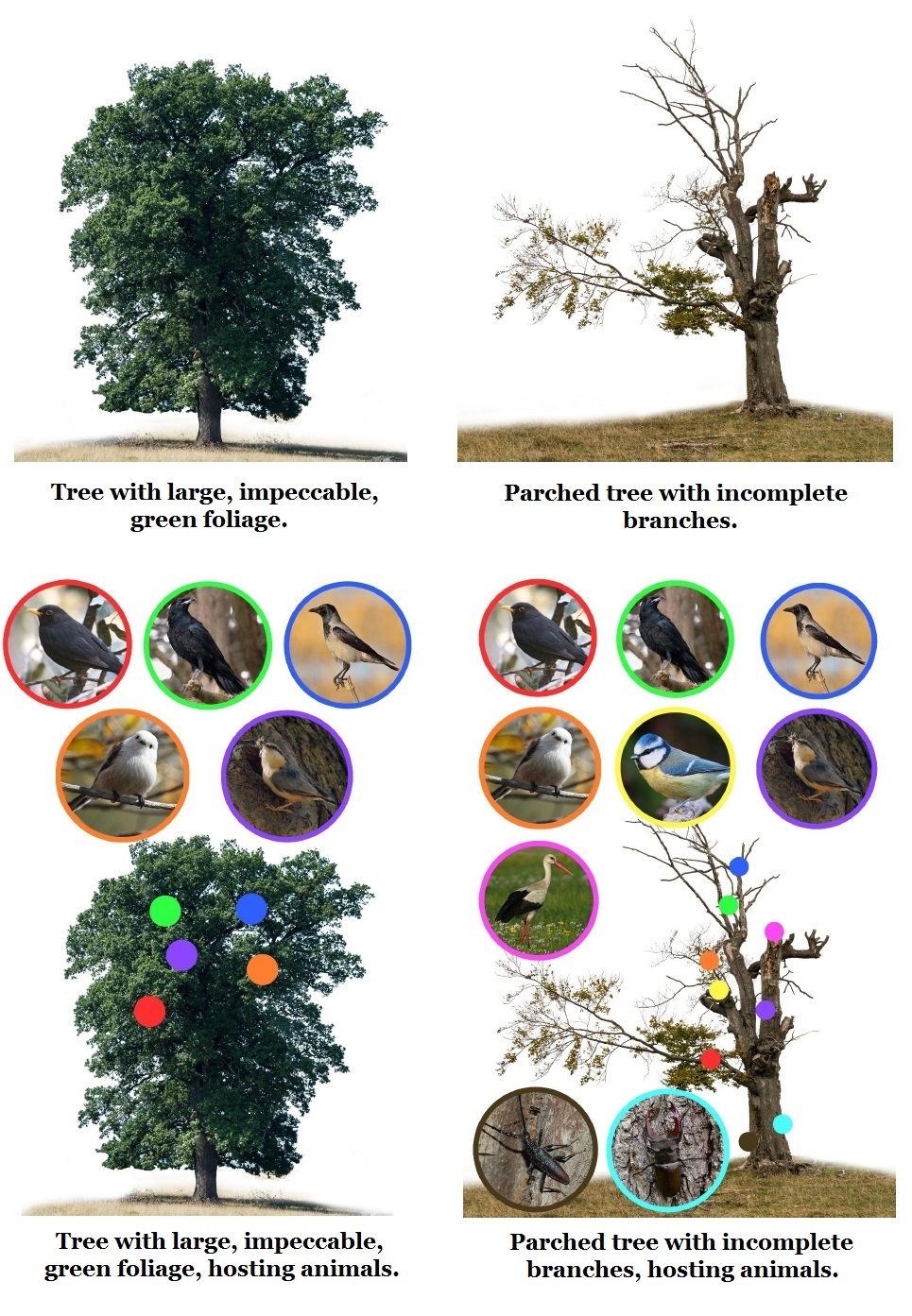Home / Research with students /
27/08/2018
Young people perception on the old trees
Student: Attila Ambrus, BSc, 3rd year
Scientific advisors: Tibor Hartel, PhD, associate professor and István Urák, PhD, associate professor

Large old trees are among the most iconic organisms in nature. They are indispensable elements in many terrestrial ecosystems. In many ecosystems they can appear as single, spatially isolated trees or scattered in a pasture. Despite being spatially isolated, they play numerous ecological roles that younger trees don’t provide, such as habitat for different species, enhancing the penetration of rainwater in the soil. On a socio-cultural level one can mention their aesthetic, symbolic, religious and historical values. It is quite difficult to give a definition of old trees, because the trees present diverse features according to the species, the ecosystem, or the bioclimatic factors. Today it is widely accepted the criterion of the proportion between the relative height and relative circumference. For a given species it is defined the smallest and the highest circumference of the fertile individuals and the average height of the highest individuals. Beside these data, the old trees have other peculiarities: the presence of large and numerous cavities in the trunk, full-blown foliage, thick branches, and cracked bark. Large old trees are susceptible to numerous threats, including natural or anthropogenic. Because of these factors the conservation and management of large old trees is considered a challenge. Besides this, the socio-cultural values are often neglected regarding their conservation, though in reality these values increase the overall value of the large old trees. Therefore, in order to conserve these trees, we should take in consideration both their ecological and social-cultural values.
 The main goal of my research was to understand the young people’s perceptions regarding the old trees. For this reason we used questionnaires. The key part of the questionnaire was a set of pictures:
The main goal of my research was to understand the young people’s perceptions regarding the old trees. For this reason we used questionnaires. The key part of the questionnaire was a set of pictures:
(1) tree with large, impeccable, green foliage;
(2) tree with large, green but incomplete foliage;
(3) a parched tree with impeccable branches;
(4) parched tree with incomplete branches;
(5) tree with large, impeccable, green foliage hosting animals;
(6) parched tree with incomplete branches hosting animals.
The pictures illustrated different idealized physical states of trees. The survey was carried out with 37 students (46% female, 56% male) from the Faculty of Sciences and Arts of the Sapientia University. With regard to the provenience, 37% came from urban environment and 27% from rural environment, the average age was 20.6 years.
The results showed that the different images were associated with positive and negative impressions. As the trees deteriorated, more negative feelings were expressed. However, as the role of the trees in the biodiversity was shown in the pictures, the negative feelings drastically decreased related to the deteriorated, parched trees.
The practical value of our research is that we can give a tested and simple method which relies on visual instruments, to change the social judgement and acceptance of old trees. This method could be efficiently used by the media (periodicals, TV) in the form of advertisement, posters, hangers, and save many old trees.










